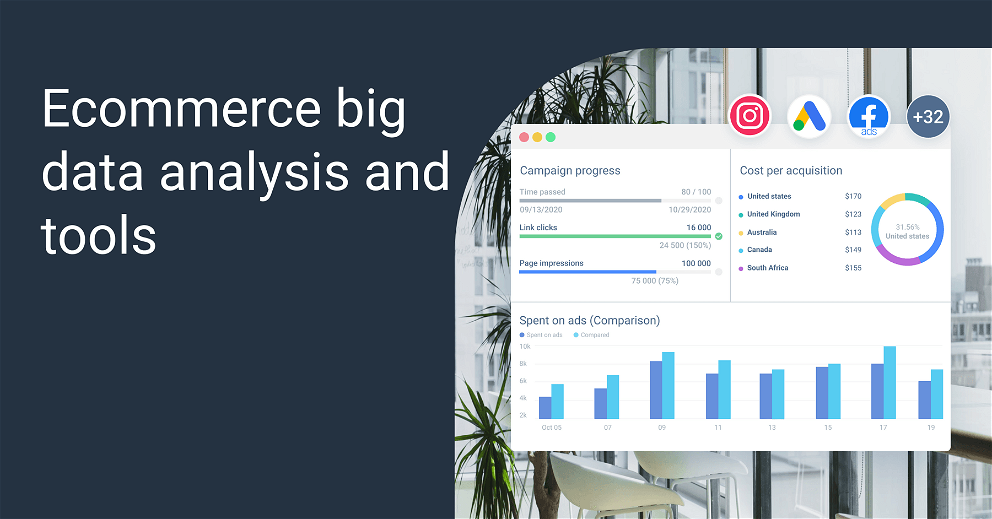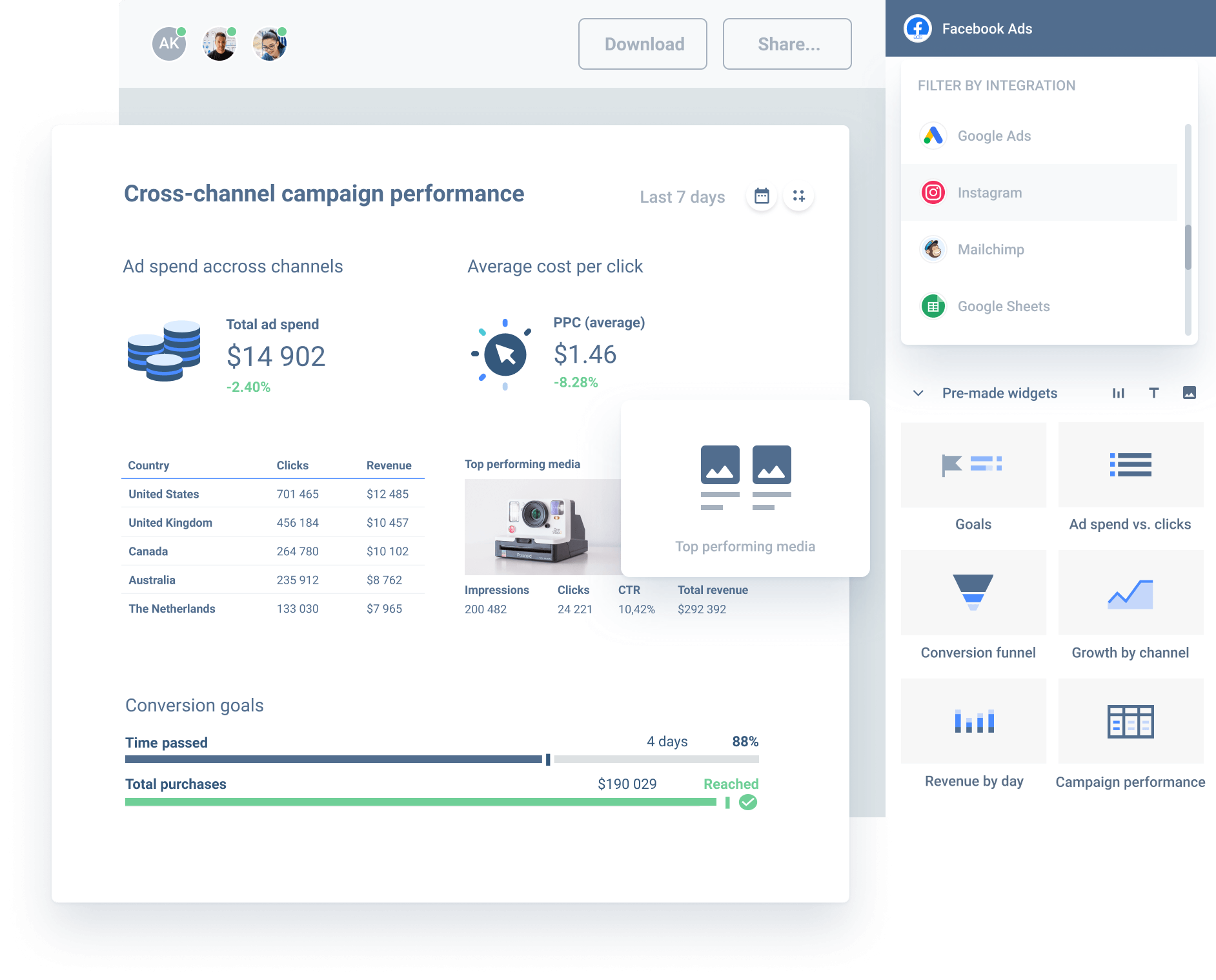Ecommerce big data analysis and tools
Big data is now everywhere. Every kind of big business relies on big data to make their marketing, sales, or financial decisions. This practice is especially prominent in e-commerce, where big data is essential to stay ahead of the competition.

Mar 29 2021 ● 4 min read

Worldwide, online data is now measured in zettabytes (1000⁷ bytes), and the size and complexity are only increasing. By Cisco's estimation, the world passed the first zettabyte mark of total Internet traffic per year in 2016.
With larger data sets come more prominent and more powerful data analytics tools. And with more powerful tools, people find more ways big data can be used to make better business decisions.
E-commerce is incredibly reliant on big data analysis. Every step of electronic commerce collects data: from customer behavior to supply chain efficiency to social media trends. Data-driven decision-making pushes business owners to look for powerful big data analysis tools, where data could be processed in real-time.
This is our main topic for today's post. What is big data? How it's used in the e-commerce industry? How processing big data with Whatagraph can help companies make sound business decisions?
What is big data?
Big data is usually described by the 3Vs: high volume, high velocity, and high variety of information that need new processing methods. For every company, big data can mean very different things. The amount of information Amazon stores about its processes will appear huge compared to small e-shop owners tracking their customer orders. This makes big data subjective to the operations and customer base, translating to the type of data collected and how it's processed.
What is eCommerce big data?
There's no strict definition of what specific data goes into e-commerce analysis. The conversation about big data in e-commerce generally revolves around what goals should the data help achieve. Business Applications Research Centre has introduced the most popular aspects of business where big data is relied upon:
- Taking strategic business decisions
- Improving business operations
- Raising customer understanding
- Reducing business costs
Based on the aspects of the business, companies can use different data sets to facilitate improvement. Each element has different big data needs.
- Strategic decision-making. Probably the broadest data requirement. It largely depends on general company goals. Data can be collected on market trends, competition marketing efforts, the retail value of the assortment, etc. Big data allows top management to take a truly in-depth look at their company, the market at large and even use predictive analytics to make sound decisions for the future.
- Improving business operations. Businesses run on efficiency, and e-commerce is extremely reliant on keeping the efficiency high. Every little step in the ops can be more efficient. Things like product performance, shopping experience, warehouse management, even payment options can be improved to run smoother.
- Raising customer understanding. Insights on customer behavior are crucial here. Cart abandonment, preferred payment methods, sales number during promotions, and other customer data are always preferred to provide a personalized customer experience.
- Reducing business costs. The keyword of this data is the supply chain. Cost reduction using big data can help identify most problems and inefficiencies in the supply chain, like the length of delivery, warehousing costs, shift management, etc.
How can you use Whatagraph for big data analytics?
Big data in e-commerce is nothing new. Amazon, eBay, Alibaba, and other large e-commerce businesses use big data on everything - from improving their customer service to effectively using social media for online marketing. Even small-scale online retailers are using large data sets to improve their business and gain more insights into the market.
Whatagraph is the best example of powerful big data analytics for e-commerce. With Whatagraph, it's possible to connect many complex data sets and analyze them in real-time. This means that various improvements to internal operations or customer experience can be made instantly, instead of waiting for reports or business intelligence calculations.

With Whatagraph, e-commerce businesses can run their own big data analytics:
- Track the performance of online marketing campaigns with Whatagraph's ecommerce reporting tool. This brings customers to their e-commerce platform.
- Gain insights into customer satisfaction by tracking reviews and comments.
- Provide personalized shopping experience by observing their audience preferences, locations and other valuable metrics.
- Increase or reduce paid social media marketing budget based on the returns of each campaign.
- Identify and reward loyal customers based on repeat purchases.
- Instantly connect e-commerce platforms like Shopify to get that big data rolling.
- Connect custom e-commerce platforms using CSV or Google Sheets.
- Try and test big data analytics before purchasing. The seven-day free trial of Whatagraph lets you use big data immediately and see the impact it makes on your e-commerce business.
Conclusion
Big data is growing bigger with each passing day. E-commerce businesses are going to be relying on big data input for all major decisions. Only better big data analytics tools can give an edge in the competitive e-commerce market.
Published on Mar 29 2021

WRITTEN BY
Vytautas PučkaVytautas is a marketing specialist with experience in Customer Service and Sales. As a data-driven professional, he is excited to have discussions with his readers and debate new and innovative ideas about marketing.